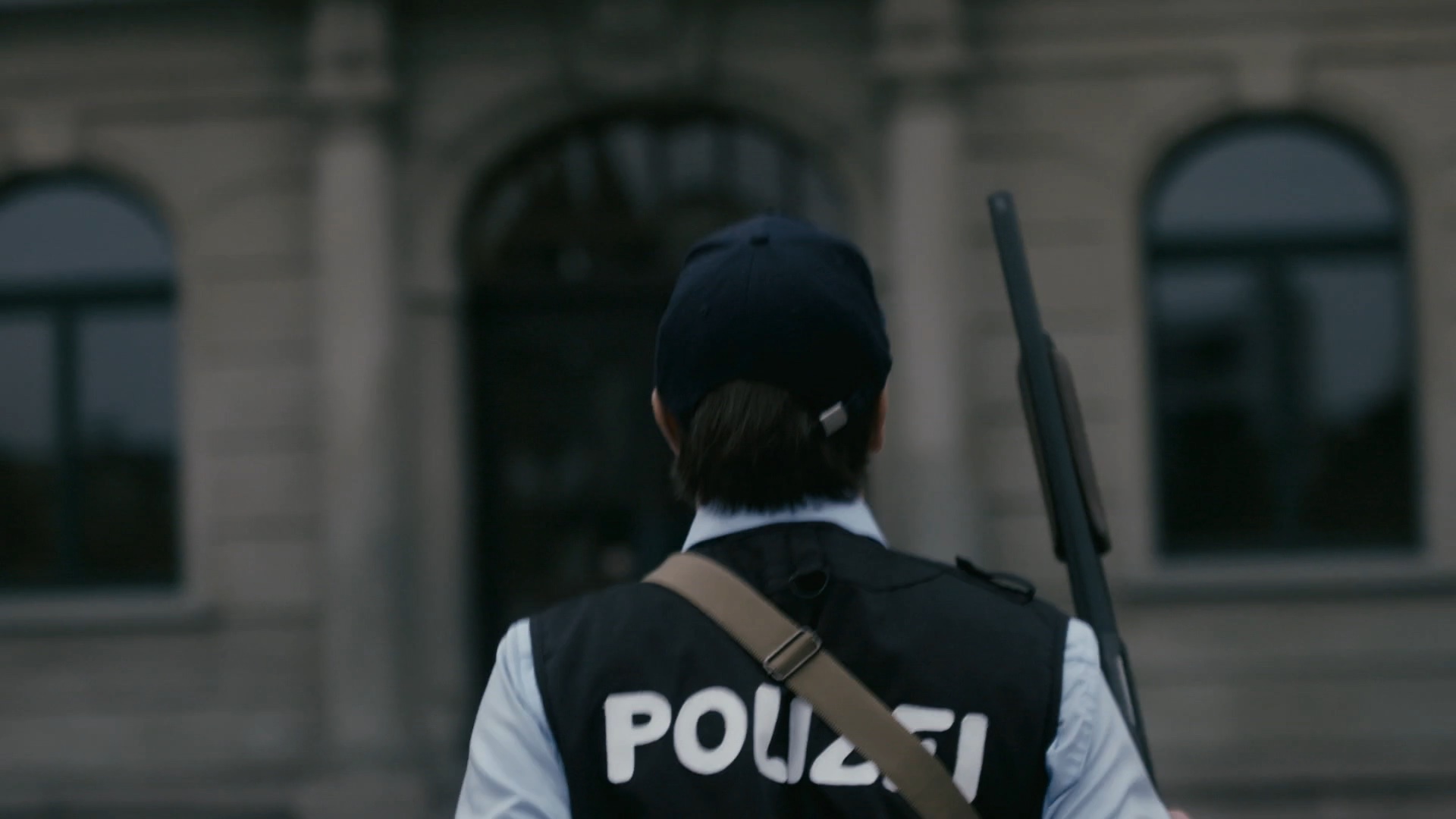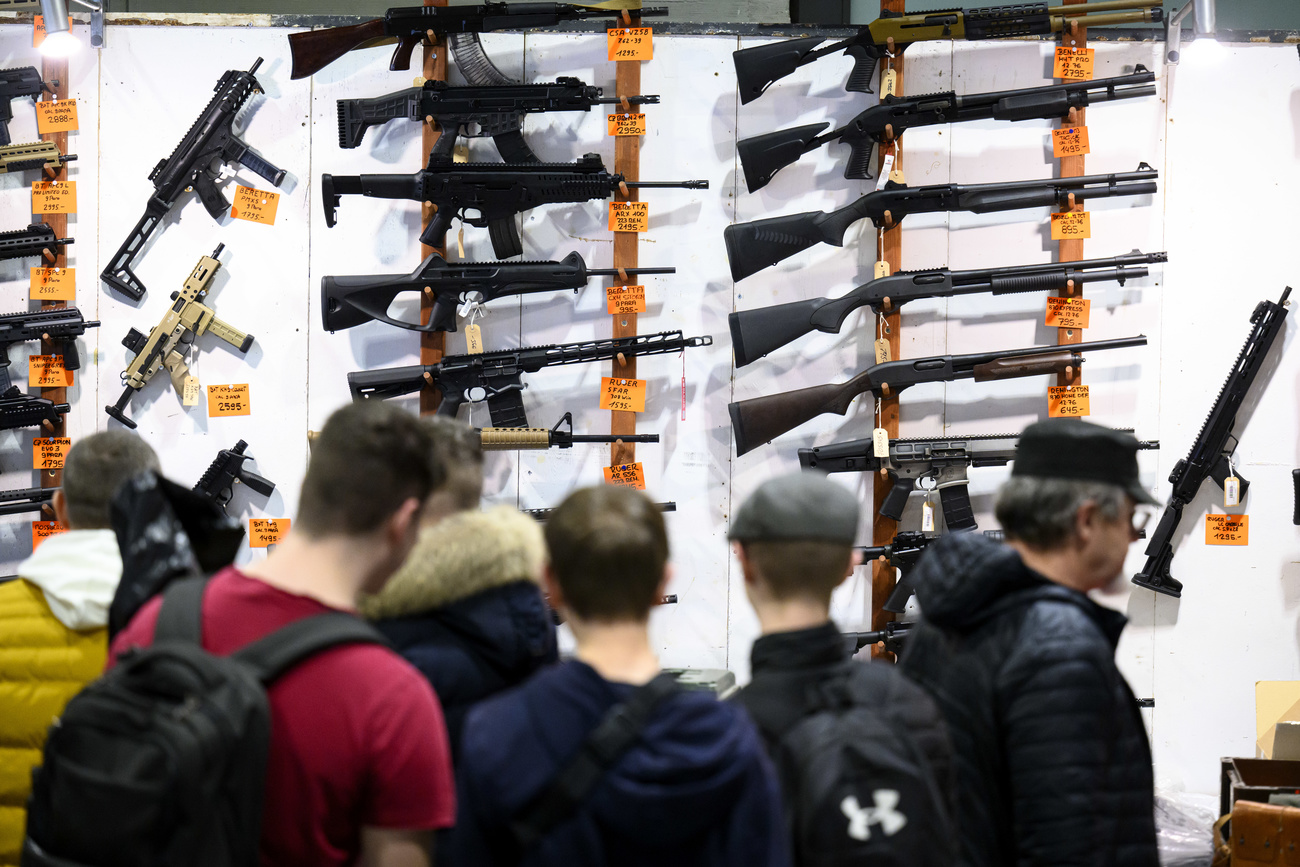Global firearm count surpasses one billion

As armed conflicts intensify worldwide, the global arms trade is surging. Small-calibre weapons are increasingly funnelled into criminal networks. This surge in violence is driving ordinary citizens to arm themselves.
It is a global trade in death. Over a billion small and low-calibre arms are in circulation around the world, according to the Small Arms Survey. The figure has doubled in 20 years.
“We are seeing the world stock of arms increasing every year. For the American market alone, 13 million new guns are being produced year on year,” notes Nicolas Florquin, head of data and analysis for the Small Arms Survey, in an interview for the GéopolitisExternal link programme on Switzerland’s French-language public broadcaster RTS. Based in Geneva and associated with the Graduate Institute, the Small Arms Survey studies the illegal flow of arms and armed violence to inform decision-makers.
A worldwide problem
Portable and easy to conceal, these small arms tend to remain under the radar, given that 80% of them are held by civilians. This scourge fans the violence of cartels and organised crime – for example in Mexico, which has about 30,000 murders per year, most of them involving firearms. In the face of criminal violence, citizens start to arm themselves. In all, more than 13 million unregistered guns are in circulation in Mexico.
More
According to estimates from the UN Office on Drugs and CrimeExternal link, North America is the main source of firearms seized by authorities around the world, followed by Europe and the Middle East. A large proportion of this weaponry finds its way to central America, as well as South America and the Middle East.
“There is a panorama of producers which has diversified over the past 20 years,” explains Florquin. “We are no longer in a situation where arms are just produced in the north and exported to the south. We see now that there are producers in other regions, such as the Middle East, Latin America, Central America and even Africa.”
Automatic pistols are the type of firearm most often seized around the world (39%), followed by carbines (25%), hunting rifles (18%), revolvers (14%), then submachine guns (3%) and machine guns (1%), according to the UN figures.
Encouraging war crimes
This opaque trade fans the flames of conflict, for example in Sudan, where a particularly destructive civil war and a humanitarian crisis have been going on for 18 months. According to an investigation by rights group Amnesty InternationalExternal link, a continual flow of arms and ammunition from abroad is feeding the fires of conflict there.
Amnesty’s report pinpoints six nations supplying weapons to Sudan. These are Serbia, Russia, Turkey, China, the United Arab Emirates and Yemen. Some are signatories or parties to the Arms Trade Treaty, which forbids arms to be exported to any country where there are likely to be human rights violations, as is clearly the case in Sudan. Weapons even getting to Darfur, in the west of the country, in violation of a UN arms embargo on the region.

More
Switzerland’s worst-ever gun massacre
Wide range of arms diverted
Exports to Sudan include firearms intended for civilian use – such as hunting or sport shooting – but also dummy guns converted into lethal weapons. These arms have often been manufactured perfectly legally. This does not surprise Florquin. “We find all sorts of techniques to get around export and import restrictions, such as re-classifying military weapons as civilian weapons,” he explains, using the example of sniper rifles supposedly intended for sport shooting. The conversion of flare guns into lethal weapons is now “one of the main sources of illicit firearms in the European Union”.
Home-made weapons are also part of the arms trade landscape. “Just now the phenomenon has exploded, and it is clear that there is a whole range of options to produce firearms in a non-industrial mode,” adds Florquin.
This is the case with commercial drones transformed into guided missiles. It also involves guns produced using a 3D printer, which are providing an increasing share of illegal weapons.
In 2023, more than 200 incidents involving arms produced from 3D printers were documented around the world. Of these, 110 were in North America and 45 in Europe, according to a studyExternal link in which Florquin was involved. “Today you can produce your own firearm printing a part of it [using polymers], such as the frame, and then getting extra parts on the legal market, thus ending up with a very effective firearm,” he says. In February, a secret network producing arms with 3D printers was dismantled for the first timeExternal link in France.

More
How Switzerland combines a passion for guns with safety
Lack of regulation
A decade has passed since the Arms Trade Treaty came into force. This treaty was intended to regulate arms exports and prevent them circulating in countries where they might be used to commit crimes. Yet the results have been mixed.
“The treaty does not have any mechanism to sanction violations,” notes Florquin. He points out that less than half of the states that are parties to the agreement report on their arms trade by the deadlines. “On the other hand, we really see results when the member states write this treaty into their national legislation.” To date, 115 states have ratified the treaty, Switzerland included. Neither Russia nor the US – two major arms exporters – has done so.
The future of regulation for small arms was the topic of a podium discussionExternal link organised by the Swiss foreign ministry, the Small Arms Survey, and a number of others, on October 17 in Geneva.
This article was produced in collaboration with Géopolitis and also appeared on the French-language public broadcaster RTS Info.
Adapted from French by Terence MacNamee/ds

More
Newsletters

In compliance with the JTI standards
More: SWI swissinfo.ch certified by the Journalism Trust Initiative











You can find an overview of ongoing debates with our journalists here . Please join us!
If you want to start a conversation about a topic raised in this article or want to report factual errors, email us at english@swissinfo.ch.